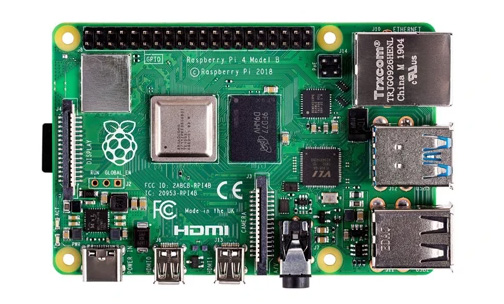The world of industry 4.0, or industrie 4.0, is undoubtedly competing for the position of largest growth market of the moment. Globally, every industry, from the manufacturing and supply chain sectors to hospitality, city infrastructure, transport, retail, national security and more, all look to new automated and connected services, to enable their businesses and operations to run smarter, leaner and more proactively.
With many firms having only just made it to the cloud, the Internet of Things (IoT) has emerged rapidly as the next, imperative peak to conquer. According to an Inmarsat survey, “IoT accounted for an average of 7% of an organisation’s IT budget between 2017 and 2020 but this is set to rise to 10% in the coming years. Businesses across all industry sectors are now planning to spend an average of $2.8 million on their IoT investments through 2024.”
With IoT comes fresh opportunities, giving businesses greater control over production, cost and risk beyond just efficiency and productivity. The flip side? IoT creates fresh security risks – as their network connections inexorably increase, enterprises have a much wider, more complex digital border to defend.

Organisations will also find themselves in the market for ‘the right fit’ IoT platform to connect, process and analyse the huge volumes of data their newly ‘IoT enabled’ business will generate. It is arguably a more complex process than the one they went through when creating a secure and productive cloud model for their businesses. Now, organisations need a platform with a service focus. Not only must the one platform protect each every varient of device, it must also provide robust network security at the same time as ensuring 100% service uptime and high-speed connectivity.
To that end, three key areas must be considered when building out an IoT strategy and implementation plan.
Understanding IoT device selection
As the IoT inevitably and rapidly develops across every industry, businesses investing in their IoT strategy will onboard a range of new devices and platforms to monitor, for which they must ensure real-time reporting and the instant, remote ability to effect change.
Many of these devices are based on existing technology, with 4G/5G network chips (interestingly the move to 5G, which is better designed to support IoT is going very slowly), and mobile processors, all crammed into small form factors for good power efficiency. For example, from devices like Raspberry Pi to Arduino boards, firms can create custom applications for smart robotics, warehousing, track and trace, product assembly, distribution and more.

Tiny boards like the Raspberry Pi can be installed anywhere in a production environment, connected to factory hardware and programmed to deliver information or make changes as those processes move along.
Businesses need not fear IoT, rather, it should be treated as a smarter version of their current networks. After all, the core processes within their business, what they produce and how the measure success, will remain. The IoT simply promises to be the means for key stakeholders to enhance, refine and study their performance models, strengths and weaknesses, in far greater detail.
Therefore, IT and IoT project managers must have a firm grasp of the inputs and outputs from their IoT devices, including:
- Data capture, acquisition and control
- Data management, processing and storage
- 24/7 connectivity and security
- Strong power management
The data elements are extensions of current networking, with devices using 5G or the latest WiFi standards to reduce the need for cabling. Edge processing can collect data and only send the highlights or anomalous signals back to HQ or control, to reduce the pressure on bandwidth and data volume.
Processing that data requires industry-grade solutions for analytics, be it from a device monitoring paint flows in a spray shop, or a single daily update from a remote vending machine for resupply.
Monitoring & control
Building a successful IoT can be based on potentially hundreds or thousands of these devices. Businesses need to be keenly aware, either through internal resources or a strong partner, about developing applications, designing devices and deploying them with security and cost in mind.

Many businesses also create digital twins of their manufacturing processes and/or products to enable much deeper insights into actual performance rather than the more traditional, post-event, statistics based analysis.
To maintain control of the IoT, real-time visibility is required to monitor device health and performance. Fault detection, preventative alerts, faster problem resolution all ensure these smart facilities remain at peak operations with reduced downtime.
Mastery of IoT device management platforms
Most businesses add IoT to their existing services and need applications and data flow that integrate with their existing production systems, supply chains and back-office applications. Many IoT systems are bespoke to each business, so there is a greater opportunity to gain competitive advantage over rivals who are behind on the technology or adopt a stock IoT solution.
Whichever approach an organisation takes – robust device management is imperative for all, including endpoint management and maintenance. As firms adopt wider IoT systems, their ability to react to anomalies faster needs to increase as more and more of the traditional workarounds become redundant in the new environment. IoT device management service (PLEASE LINK THIS TO AN IOT DEVICE MANAGEMENT STORY) will support businesses as more devices come on-stream, with many enterprises expecting to operate millions of IoT devices in the coming years.

The IoT creates a challenging new target for hackers, so network security is as vital as the IoT devices themselves. Organisations must ensure that they have the right solution in place to ensure that security updates, network analytics and troubleshooting can be delivered and are running continuously, in real-time.
As IoT fleets grow, managing them will be key to business success, and understanding their place in the future of industry, manufacturing, supply chain and operations will be essential for any company to gain maximum profit and the competitive edge, as IoT becomes the new boom area for every industrial sector around the world.










